前言
记一下JS原型的知识
原型
假如有下面的代码
1
2
3
4
5
6
| function Person(name = "sena", age = 16) {
this.name = name;
this.age = age;
}
let person = new Person();
|
原型的关系是这样的
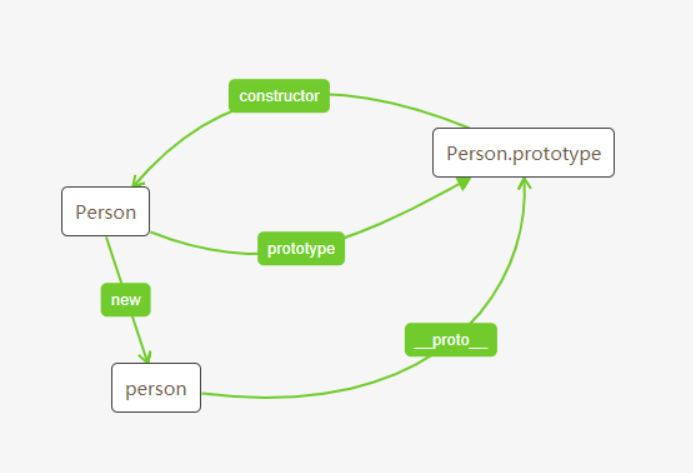
原型链
通过 __proto__ 作为桥梁连接起来的一系列原型就是原型链
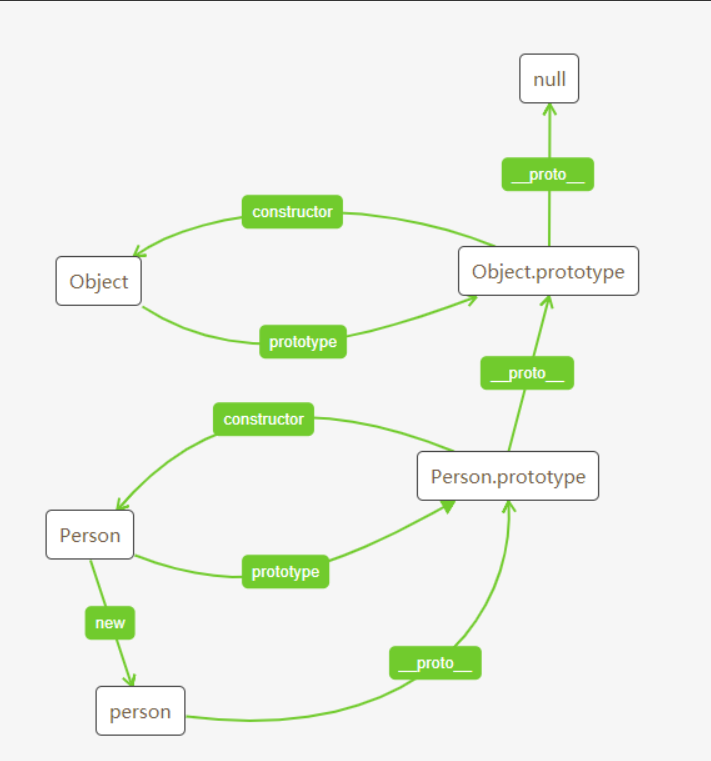
1
2
3
4
5
6
7
8
9
10
| function Person(name = "sena", age = 16) {
this.name = name;
this.age = age;
}
let person = new Person();
console.log("person的原型", Reflect.getPrototypeOf(person));
console.log("object的原型", Reflect.getPrototypeOf({}))
console.log("object原型的原型",Reflect.getPrototypeOf(Reflect.getPrototypeOf({})));
|
输出结果是
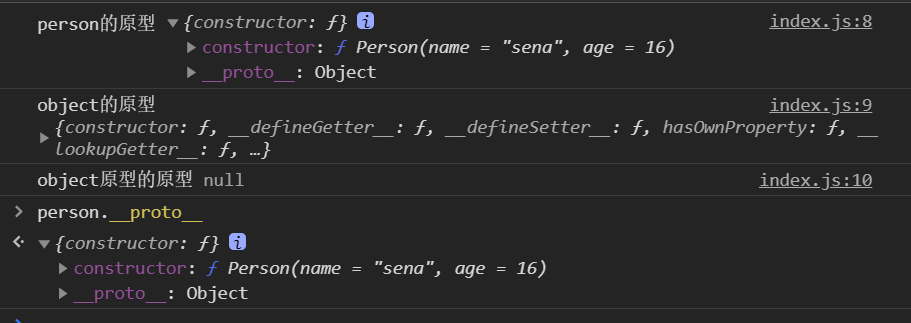
继承
es6为我们提供了非常好的继承模式
1
2
3
4
5
6
7
8
9
10
11
12
13
14
15
16
17
18
19
20
21
22
23
| class Person {
constructor(name = "sena", age = 16) {
this.name = name;
this.age = age;
}
}
class Worker extends Person {
constructor(name = "sena", age = 16) {
super(name, age);
}
}
Worker.prototype.company = "Google"
let worker = new Worker();
let person = new Person();
console.log("worker的原型", Reflect.getPrototypeOf(worker));
console.log("worker原型的原型", Reflect.getPrototypeOf(Reflect.getPrototypeOf(worker)))
console.log("worker原型的原型和person的原型比较", Reflect.getPrototypeOf(Reflect.getPrototypeOf(worker)) === Reflect.getPrototypeOf(person));
console.log("person的原型", Reflect.getPrototypeOf(person));
console.log("object的原型", Reflect.getPrototypeOf({}))
console.log("object原型的原型",Reflect.getPrototypeOf(Reflect.getPrototypeOf({})));
|

我们可以从babel转化后的代码中看出这种继承是怎么实现的
1
2
3
4
5
6
7
8
9
10
11
12
13
14
15
16
17
18
19
20
21
22
23
24
25
26
27
28
29
30
31
32
33
34
35
36
37
38
39
40
41
42
43
44
45
46
47
48
49
50
| "use strict";
function _inheritsLoose(subClass, superClass) {
subClass.prototype = Object.create(superClass.prototype);
subClass.prototype.constructor = subClass;
_setPrototypeOf(subClass, superClass);
}
function _setPrototypeOf(o, p) {
_setPrototypeOf = Object.setPrototypeOf || function _setPrototypeOf(o, p) {
o.__proto__ = p;
return o;
};
return _setPrototypeOf(o, p);
}
var Person = function Person(name, age) {
if (name === void 0) {
name = "sena";
}
if (age === void 0) {
age = 16;
}
this.name = name;
this.age = age;
};
var Worker = function (_Person) {
_inheritsLoose(Worker, _Person);
function Worker(name, age) {
if (name === void 0) {
name = "sena";
}
if (age === void 0) {
age = 16;
}
return _Person.call(this, name, age) || this;
}
return Worker;
}(Person);
Worker.prototype.company = "Google";
var worker = new Worker();
var person = new Person();
|
概括一下就是
- 创建一个父类型的对象
temp,并且把对象的constructor属性设置成子类型的构造函数
- 把创建的父类型对象
temp设置成子类型构造函数的prototype
- 把子类型构造函数的
__proto__指向父类型
自己写一个inherit函数可以写成这样
1
2
3
4
5
| function inherit(sub, sup) {
sub.prototype = Object.create(sup.prototype);
sub.prototype.constructor = sub;
Object.setPrototypeOf(sub, sup);
}
|
奇怪的东西增加了
有这么一张非常有趣的图

大部分东西都在上面讲过了
只有一个东西要提一下,那就是所有函数的__proto__都指向Function.prototype
1
| Object.__proto__ === Function.prototype
|

那就随便提提这个,对象的prototype指向undefined

为什么要有super
看图看图,super初始化了对象并且使用父构造函数来为this绑定属性
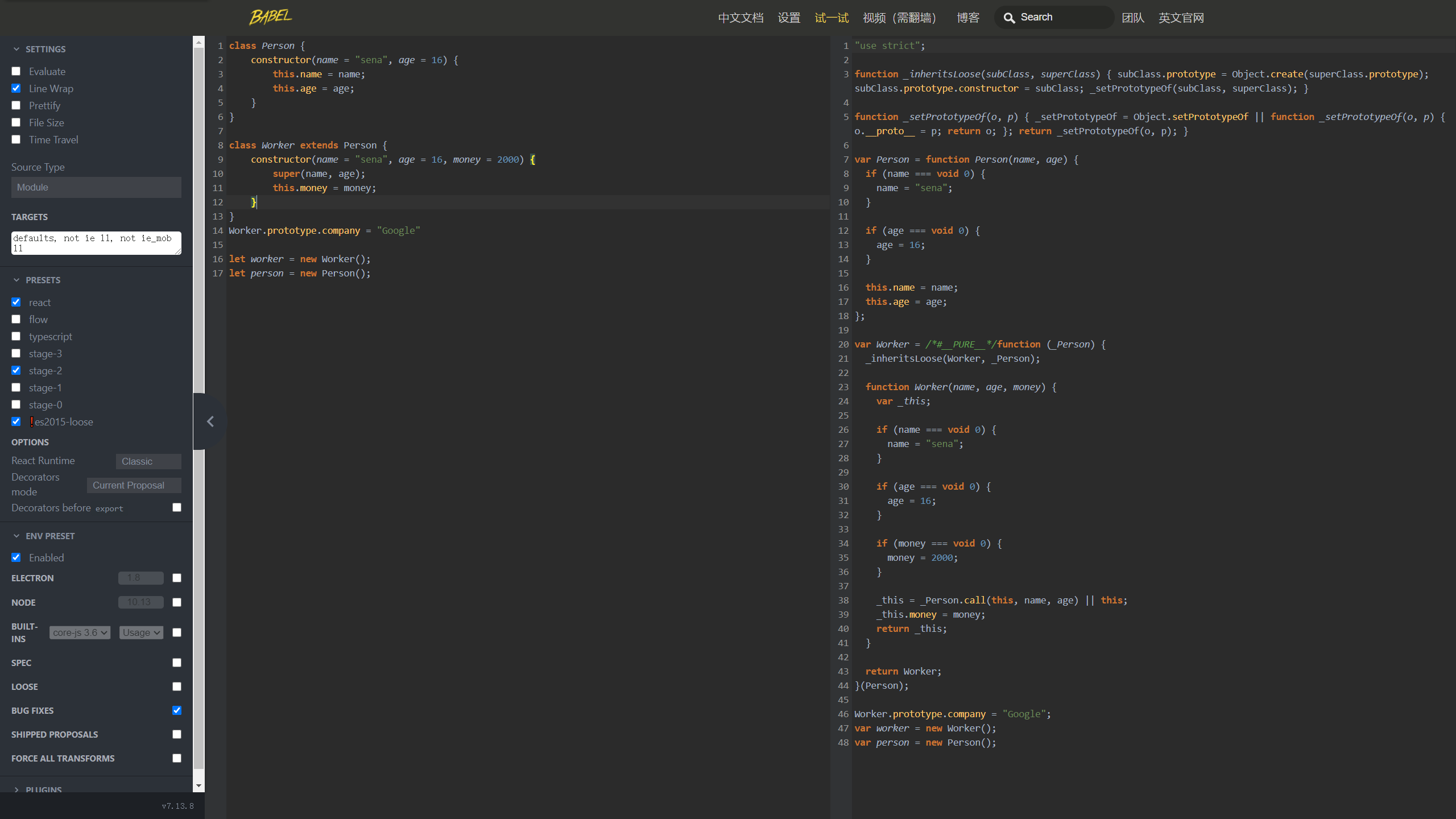
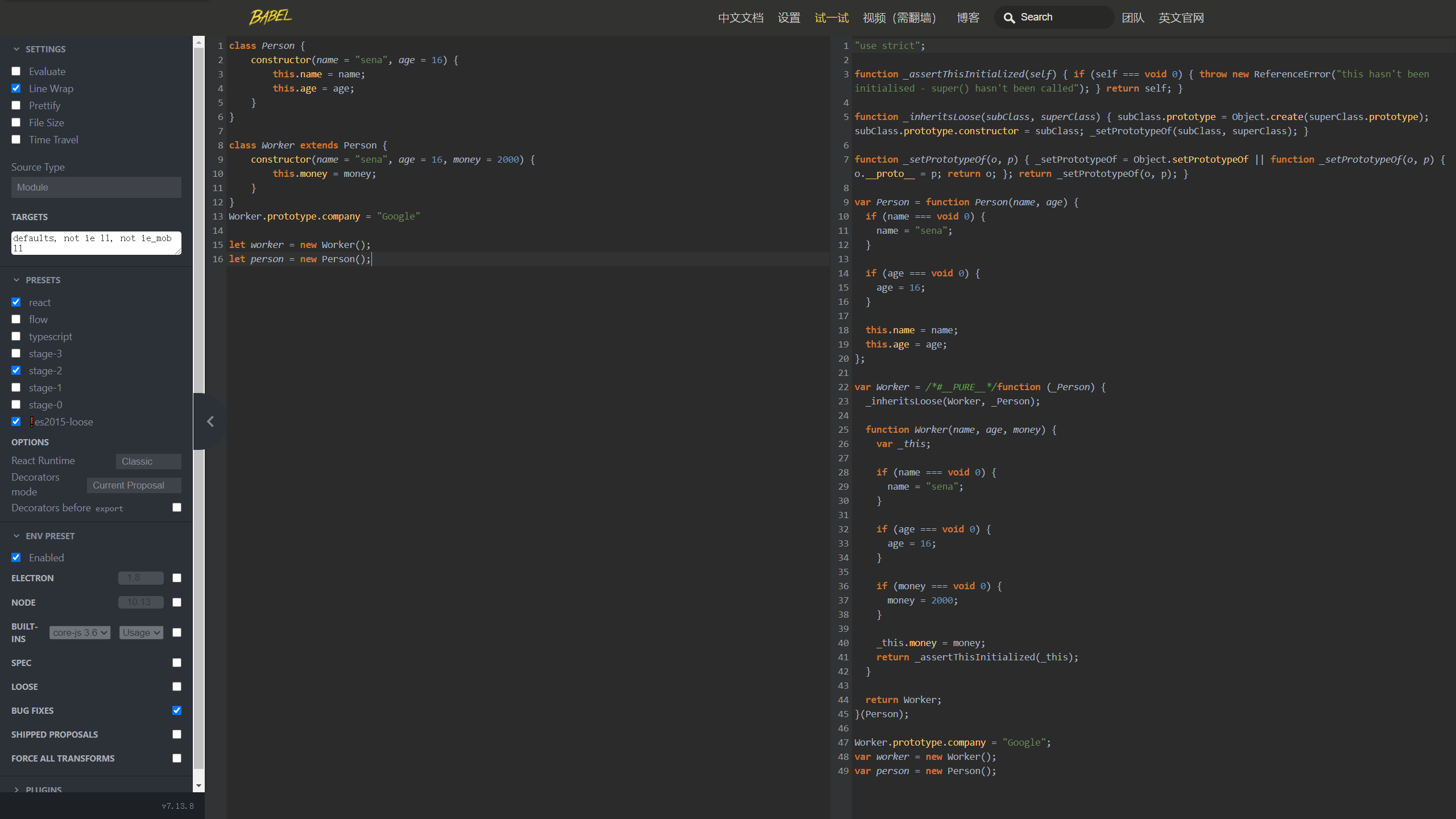
后记
别骂了,我自己都觉得水)
FAQ & Ref
图解原型和原型链








